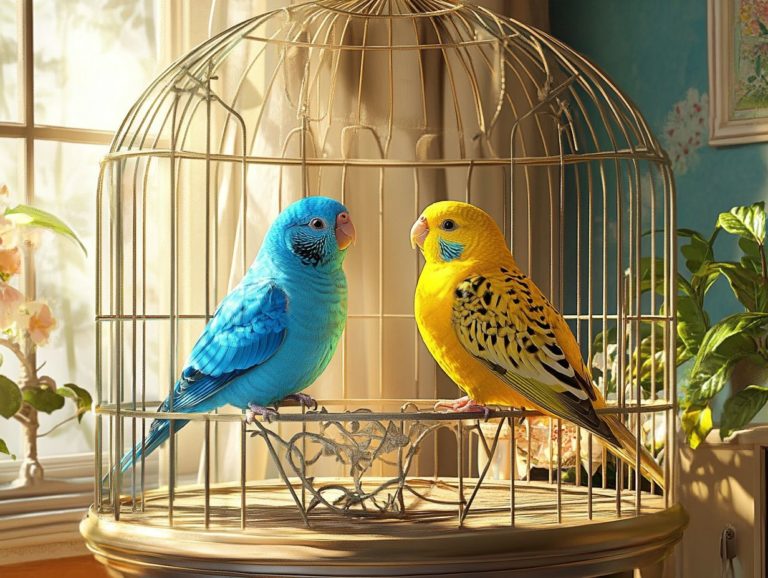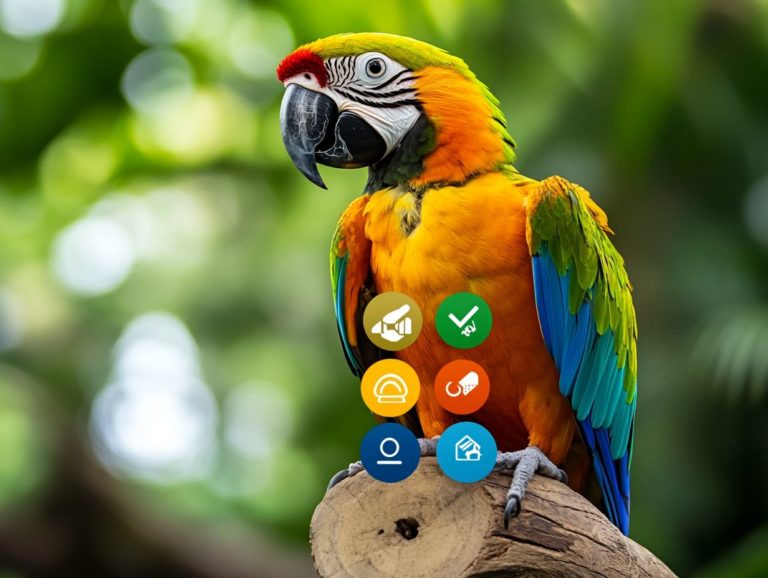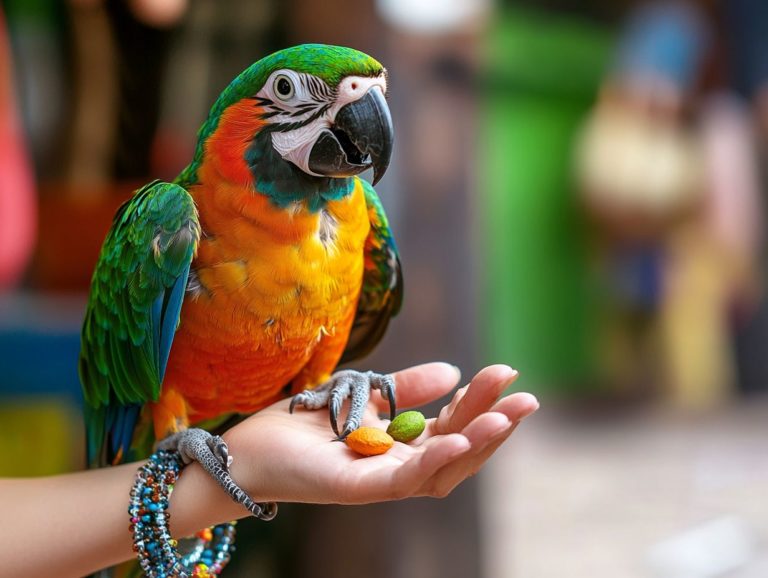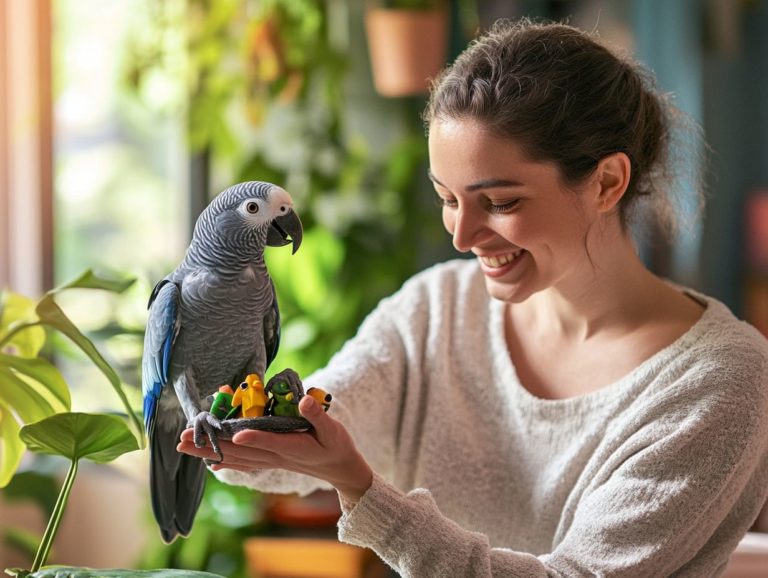How to Keep Training Fun for Your Bird
Training your bird is an enriching journey that deepens the bond between you and your feathered companion, paving the way for a trusting relationship.
By enhancing their physical and mental stimulation, you can teach them delightful tricks like fetch, significantly improving their quality of life. This article explores the many benefits of training and offers tips for creating a positive training environment filled with engaging techniques and fun games.
It also addresses common challenges you may face and provides effective strategies to make your training sessions enjoyable and successful, fostering a comfortable learning environment.
Get ready to discover your bird’s incredible potential and watch their skills soar!
Contents
- Key Takeaways:
- Why Training is Important for Birds
- Creating a Positive Training Environment
- Training Techniques for Birds
- Fun and Engaging Training Activities
- Challenges of Training Birds
- Ensuring Continued Training Success
- Frequently Asked Questions
- How can I make training fun for my bird?
- What types of activities can I do to make training enjoyable for my bird?
- How often should I train my bird to prevent boredom?
- What should I do if my bird seems uninterested during training?
- Can I use negative reinforcement during training to keep my bird focused?
- Are there any signs that my bird is enjoying the training?
Key Takeaways:
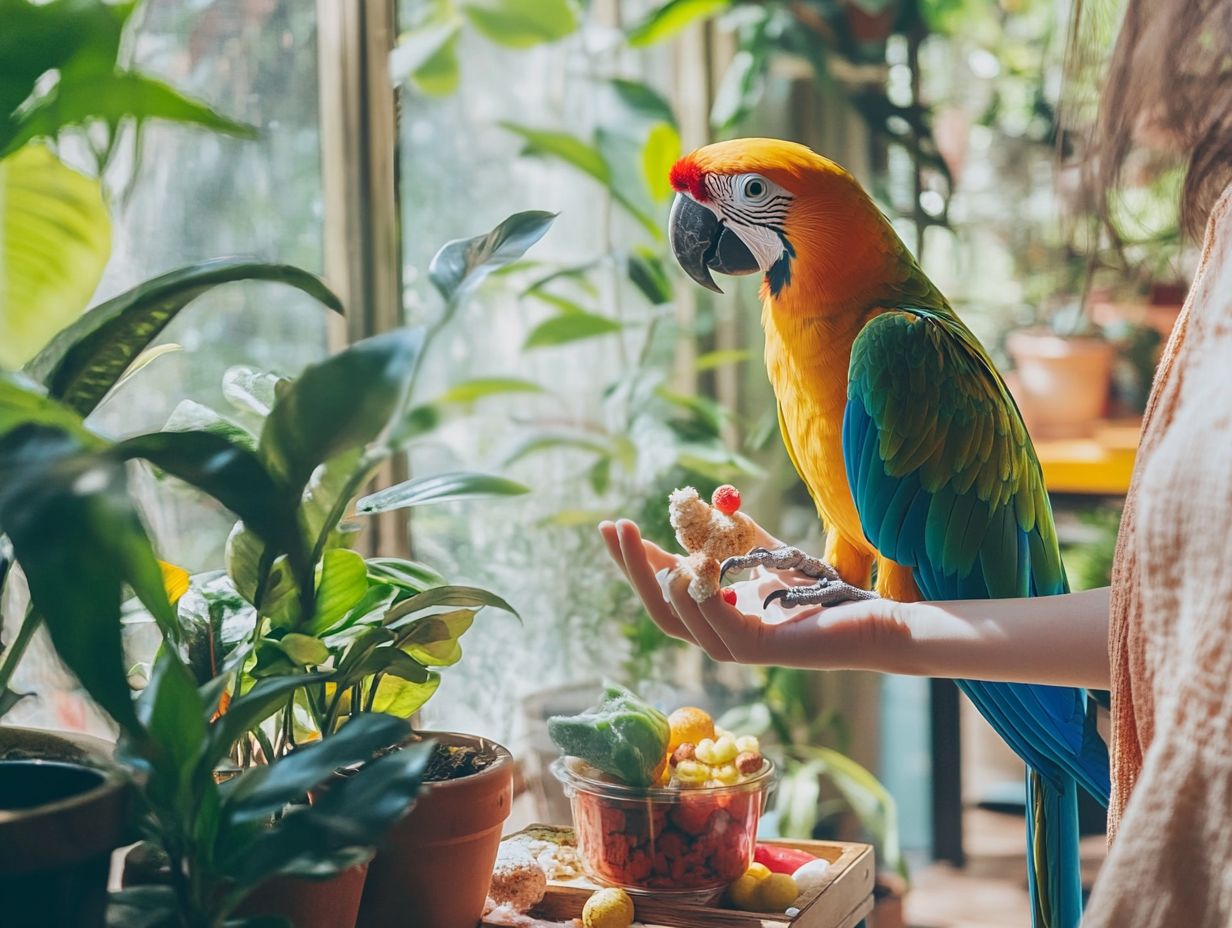
- Regular training boosts your bird’s physical and mental health.
- Create a safe space for effective learning.
- Use positive reinforcement to make training fun and rewarding.
Why Training is Important for Birds
Training is essential for birds. It improves their behavior and communication skills while nurturing a trusting bond between you and your pet, enhancing their overall comfort.
Recognizing the importance of training can enhance your interactions and contribute to a happier, well-adjusted pet. It provides the mental and physical stimulation they need to thrive, leading to improved behavior.
Using effective training methods makes the process enjoyable for both you and your bird, creating a harmonious life together where each command learned reinforces trust. To enhance your training experience, consider learning how to monitor your bird’s progress in training.
Benefits of Training for Physical and Mental Stimulation
Training provides vital physical activity. It helps your birds stay fit and maintain a healthy weight.
Mental engagement is equally important. Activities like puzzles and foraging keep their minds sharp and minimize issues caused by boredom.
Techniques like target training where your bird learns to touch a target with its beak sharpen motor skills and require critical thinking. Incorporating positive reinforcement, such as treats or praise, strengthens the bond between you and your birds while boosting their confidence.
This holistic training approach ensures both their physical health and mental well-being are prioritized.
Creating a Positive Training Environment
Establishing a positive training environment is crucial for successful bird training. This approach nurtures trust and communication between you and your bird, allowing learning to flourish through engaging activities.
Setting Up a Safe and Engaging Training Space
Creating a safe and engaging training space is essential for effective bird training. It fosters learning and interaction, allowing various training techniques to be applied.
Consider the unique needs of different bird species, such as parakeets, cockatiels, and macaws, as their preferences can vary widely. Interactive tools like perches, stimulating toys, and puzzles can enhance their attention spans and make training more enjoyable for both pets and owners.
Always prioritize safety. Remove potential hazards like sharp objects and toxic plants. Providing a quiet and calm atmosphere minimizes distractions, helping your feathered trainees focus on their lessons and ensuring their well-being, which is vital for successful training.
Training Techniques for Birds
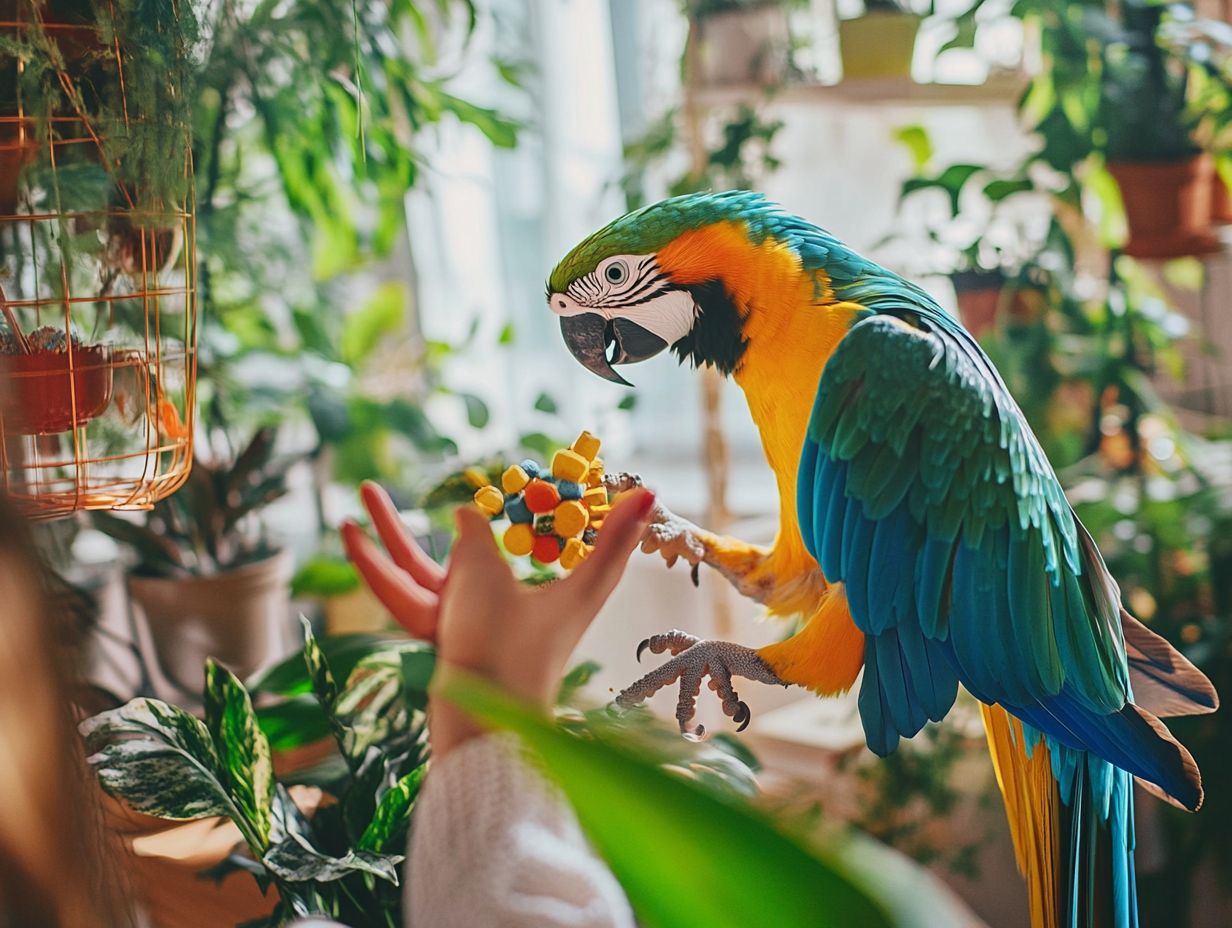
You ll find that a range of training techniques, such as positive reinforcement and clicker training, are highly effective for teaching birds commands and shaping their behavior. These methods promote trust and communication throughout the process.
Embracing these approaches can lead to remarkable results in your birds’ learning journeys, ultimately enhancing their skills and behavior.
Positive Reinforcement and Clicker Training
Positive reinforcement and clicker training are exceptional techniques that reward your feathered friends for exhibiting desired behaviors. This transforms the learning process into an enjoyable and effective experience, especially for novice bird owners.
You can create a fun space that makes your bird eager to learn and play! For example, when your bird successfully hops onto your hand, a satisfying click followed by a small treat reinforces that behavior beautifully. This approach not only encourages the actions you wish to promote but also deepens the bond between you and your bird, offering an enriching experience for both.
You can also teach your bird to mimic sounds by rewarding them with praise or a favorite snack whenever they vocalize correctly. By implementing these strategies consistently, you ensure your bird understands which behaviors to focus on, paving the way for a more harmonious and rewarding learning experience that fosters trust and comfort.
Fun and Engaging Training Activities
Incorporating enjoyable and engaging activities into your training sessions can greatly elevate your bird’s learning experience. For more effective methods, consider exploring the best training techniques for pet birds. This provides valuable mental stimulation and strengthens the bond you share with your feathered companion, enhancing your relationship.
Teaching Tricks and Games for Mental Stimulation
Teaching tricks and incorporating games, such as fetch or hide-and-seek, are exceptional ways to keep your feathered friend mentally stimulated. To enhance this experience, consider learning how to set up a training area for your bird, making the training process genuinely enjoyable.
Engaging in these interactive activities allows you to cultivate a deeper connection with your bird. For instance, teaching your parrot to wave or perform simple tricks like turning in circles enhances its cognitive abilities and fosters trust between you, creating a comfortable environment for learning.
Using toys for hide-and-seek can keep your bird engaged, encouraging exploration while reinforcing its problem-solving skills, which are vital for training. For more tips on this, check out how to use toys in bird training. Incorporating rewards, whether it’s a favorite treat or verbal praise, helps reinforce positive behavior, making training delightful for both you and your bird.
These methods not only promote mental engagement but also strengthen the bond between you and your avian companion, ensuring a harmonious relationship.
Challenges of Training Birds
Training birds can indeed present unique challenges that demand your patience, skill, and a deep understanding of bird behavior. Navigating these complexities is essential for success in your avian endeavors, enhancing both your training methods and relationships.
Start training today and watch your bird thrive!
Common Difficulties and How to Overcome Them
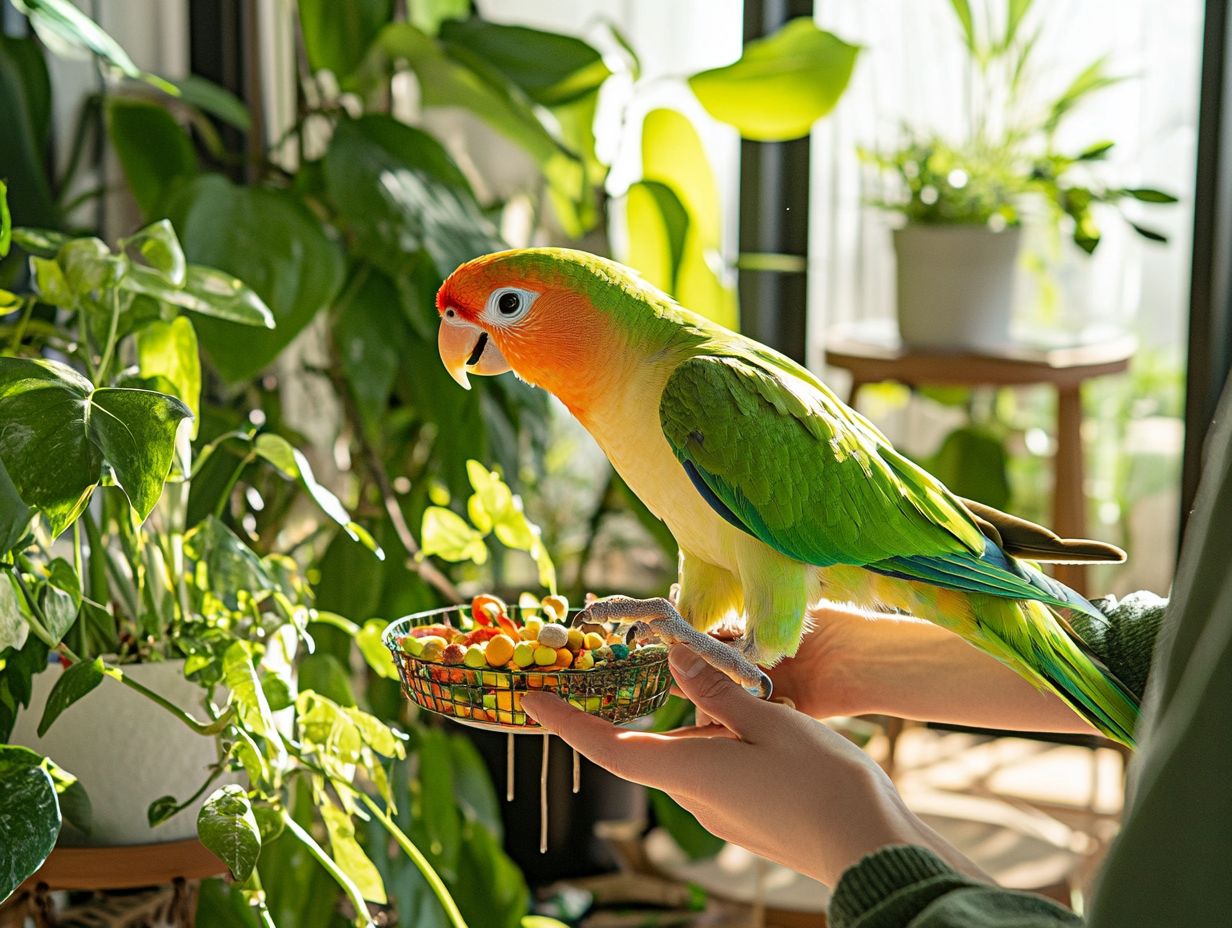
Common difficulties in bird training often stem from misunderstandings of their behavior. With a thoughtful approach and consistent practice, you can manage these challenges effectively.
One significant issue many bird owners encounter is anxiety. This may show up as fear or resistance to following commands. For instance, your bird might hesitate to step onto a perch or come when called. This could be due to past negative experiences or a lack of trust. It emphasizes the need for patience and rewarding good behavior.
To tackle this, create a positive training environment using treats as incentives. Gradually introduce commands in a calm manner and keep training sessions short and enjoyable. Establishing consistent routines helps your bird feel secure. Gentle voice commands can further alleviate anxiety, fostering a stronger bond between you and your feathered friend.
Ensuring Continued Training Success
To ensure ongoing training success for your birds, maintain consistency in your training methods while emphasizing progression. Incorporating the role of play in bird training keeps them engaged and promotes their growth effectively, especially for novice trainers.
Maintaining Consistency and Progression
Maintaining consistency and tracking progression in bird training are essential for reinforcing learned behaviors. This approach encourages further skill development and ensures a positive experience throughout.
Establishing a well-structured training schedule can make a world of difference for you and your feathered friend. Understanding the benefits of daily training for birds highlights how regularity in timing helps your bird anticipate training sessions, fostering a positive mindset that sets the stage for success.
Implementing a reward system tailored to your bird s individual preferences can significantly boost their motivation. This makes them more eager to engage during training, especially when it involves treats they love. Monitor behavioral improvements and skill acquisition by keeping observational notes and conducting regular assessments. This allows for tailored training plans.
Using simple metrics, like task completion rates and overall responsiveness, empowers you to evaluate how effectively you re guiding your avian companion on their learning journey. This enhances communication and trust.
Frequently Asked Questions
How can I make training fun for my bird?
To keep training fun for your bird, try incorporating different types of rewards such as treats, toys, or praise. Additionally, learning how to motivate your bird during training can make a big difference. Vary the training environment and mix up the order of commands to keep things interesting for your bird!
What types of activities can I do to make training enjoyable for my bird?
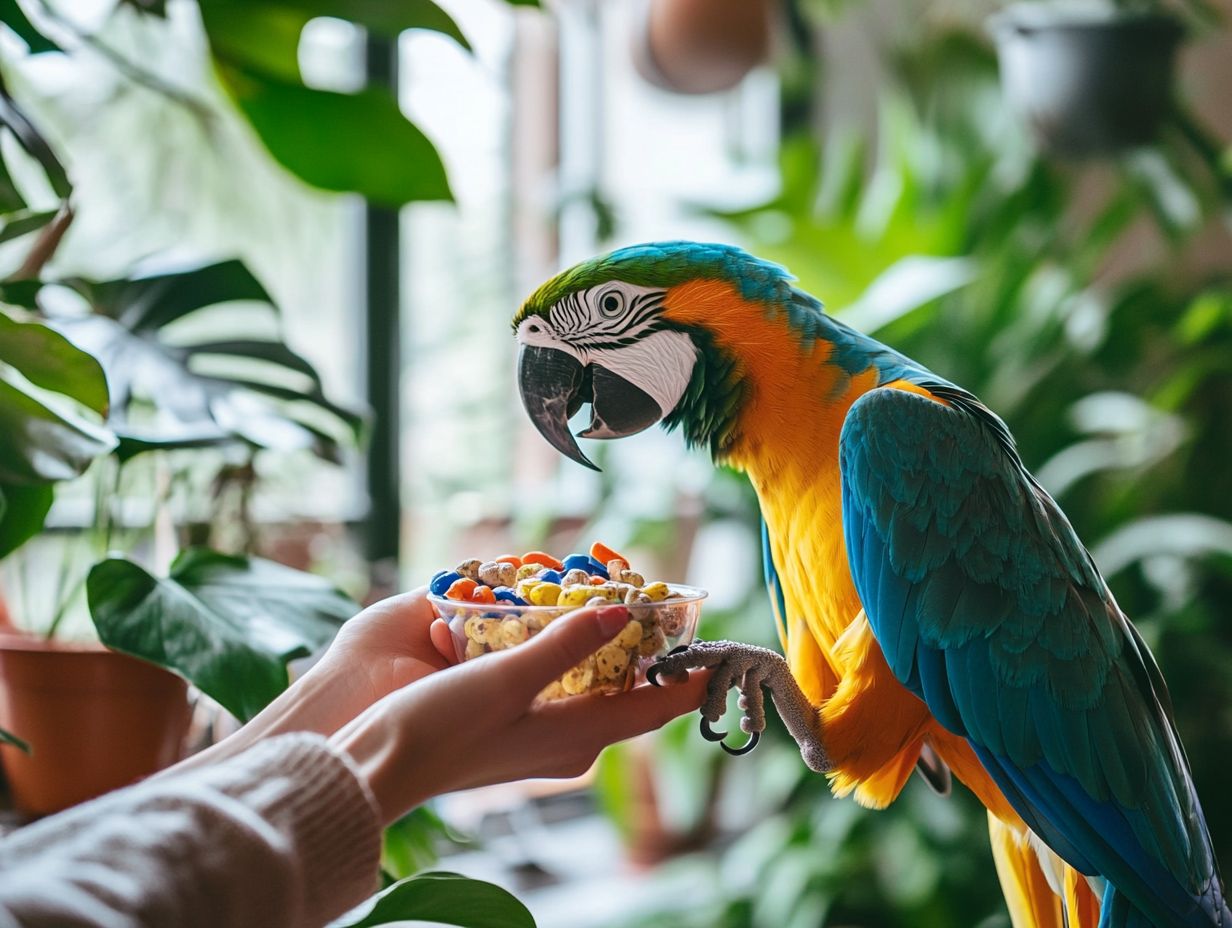
There are many activities you can do with your bird to make training fun. Play games like hide and seek, teach them tricks, or even go on outdoor walks together. Additionally, incorporating ways to keep your pet bird engaged and healthy using new and interesting objects during training sessions keeps your bird engaged.
How often should I train my bird to prevent boredom?
It’s important to have regular training sessions with your bird. Keep them short and engaging! Ideally, train for 15 minutes, two to three times a day. For those with more cautious pets, consider these tips for training a timid bird. This will prevent your bird from getting bored and help them retain what they have learned.
What should I do if my bird seems uninterested during training?
If your bird appears uninterested or distracted during training, stop the session and try again later. Avoid forcing your bird to train when they are not in the right mindset. Instead, consider exploring how to train your bird to stay calm and find new ways to make the training more fun and engaging!
Can I use negative reinforcement during training to keep my bird focused?
No, negative reinforcement, such as punishment or scolding, should never be used during training. It can create fear and stress in your bird.
Use positive reinforcement techniques. This approach leads to a happier and well-trained bird.
Are there any signs that my bird is enjoying the training?
Absolutely! Watch for these exciting signs that show your bird is loving the training.
These include being attentive to your commands, showing enthusiasm, and participating without hesitation.

